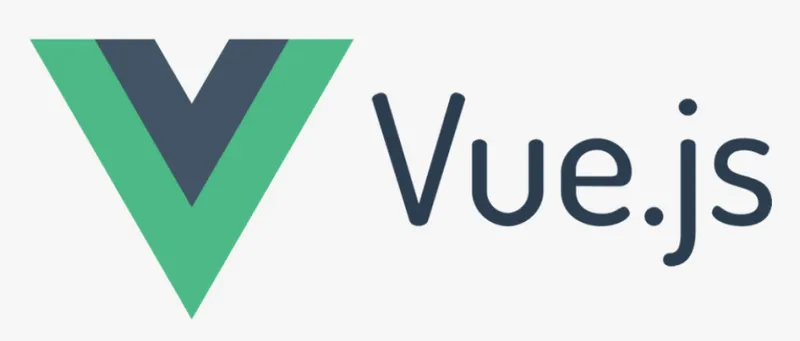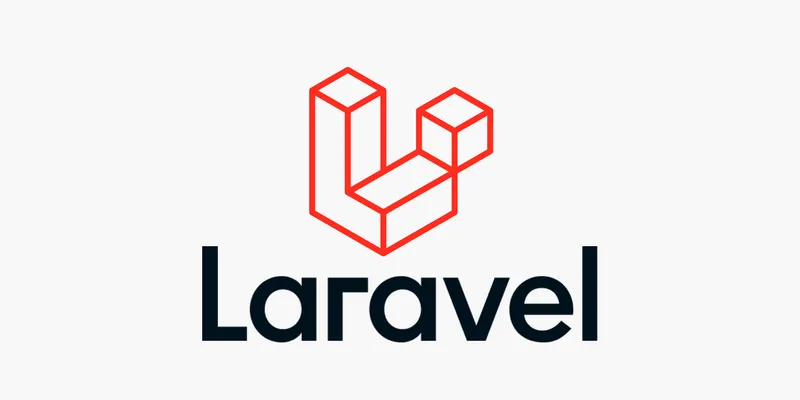Part of being in the software development space means I’m near a lot of entrepreneurs. Code is a powerful building block, and that appeals to a lot of self-taught big thinkers.
For example, I recently grabbed lunch with my friend Alex, who was extolling the virtues of Vue to me. She’d designed a fun social media app designed to get the dog walkers of her neighborhood together. But she was stuck on picking the right backend technologies. Should she go with Node.js to keep everything consistent? Maybe. But she had a history working with Python – so maybe Django was a better choice.
We talked it over for a while until she landed on Django, simply because she’s a Pythonista at heart and enjoys the language. But that choice was specific to her situation. For other folks, the best backend language for Vue might be Go, Ruby on Rails, PHP’s Laravel, or something else entirely. My hope is that by the end of this article, you’ll know what the best backend for Vue for you is.
In this article, I’ll give you:
- Some interesting background about Vue
- Some considerations to keep in mind for choosing the right backend for a Vue app
- A note on decoupled architectures and why that matters
- Six backend options to consider
Let’s start.
What is Vue, and why is it used? 🔗

Vue.js is a progressive JavaScript framework that is mostly used for building interactive and dynamic user interfaces, hence Alex’s fun dog-walking app. It’s a frontend framework because it focuses on the client-side of the stack.
People like Alex love Vue because it’s so simple and easy to use. Unlike some other frontend frameworks (cough React cough), Vue has a gentle learning curve, making it a popular choice for beginners and developers who want to quickly build user interfaces.
Vue uses a component-based architecture – this means you can break down your application into reusable and self-contained components, instead of writing all the code for the entire application in a single file. This modular approach promotes code reusability and maintainability.
Now let’s look at what you need to know when you choose a Vue backend.
Factors we’re looking at: 🔗
- Familiarity and skillset. If you want to spin up something quickly, go for whatever you already know or are using. But if you want to bulk up your knowledge? This is an opportunity to learn something new and expand your skills.
- Technical constraints. Will your project need to be highly scalable? What security needs do you have? Real-time updates? Data complexity? Some projects may require more advanced backend features, while others may have simpler needs.
- Ecosystem and existing support. Quick rule of thumb: check how active the subreddit is. You want a backend option that has a thriving, active, and generous community. You also want lots of documentation and libraries to try out for when things go wrong.
Decoupled architecture 🔗
I’ve talked a bit about decoupled architecture in our blog post about the best backend for React, so I’ll quote myself:
“Decoupled architecture is when you separate the frontend and backend of your application, allowing them to function independently while communicating through APIs.”
As you might know already if you follow this blog, Boot.dev’s architecture is decoupled. The SPA (frontend) is served from the domain “boot.dev” while the API (backend) is served from a separate subdomain, “api.boot.dev”.
I’ve also discussed the pros and cons of decoupling in that blog post, so I’ll summarize them briefly here:
| PROS | CONS |
|---|---|
| More flexibility to choose different technologies based on their strengths | Increased complexity in managing communication and data synchronization |
| Independently scale frontend and backend components based on specific needs | Continuous maintenance efforts for APIs to ensure compatibility and version control |
| Reusable backend services or APIs can be consumed by multiple frontend apps | Potentially more latency between frontend and backend due to network communication |
OK, now we can get into the meat of the article: what is the best backend for Vue?
Best Backend for Vue 🔗
| Backend option | Why it’s good | Example I recommend this for… |
|---|---|---|
| Golang | Simplicity, efficiency, and concurrency. Robust standard library for web development. Ideal for high-performance and efficiency. | Dashboard analytics apps |
| Java | Versatile and robust programming language with a rich ecosystem and extensive standard library. Object-oriented nature and platform independence | Enterprise-level apps |
| Node.js (+ Express.js) | Powerful combination for full-stack JavaScript. Event-driven and scalable for real-time apps. Ideal for simplified development. | Real-time chat apps |
| Ruby on Rails | Geared for fast development. Convention-based approach and rich ecosystem. Ideal for data-driven web apps and simplified testing. | E-commerce platform |
| Django | Batteries-included framework with rich tools. Similar conventions to Ruby on Rails. Suitable for APIs and scalable backends. | Social networking platform |
| Laravel | Fan favorite with strong Laravel-Vue integration. Powerful routing system and built-in security. Great authentication. | Content management systems (CMS) |
Golang 🔗

Ah, Go. A Boot.dev favorite. We love Golang for too many reasons to count. You can read about why you should learn Go, how to become a Golang engineer on the backend, how to get a job as a golang developer, and many more Go-related articles on our blog.
But what is it, and why do we love it? Go, or Golang, is an open-source, statically typed, compiled language developed by Google. It’s known for its simplicity, efficiency, and its ability to handle concurrent operations thanks to its unique goroutines.
If you’d like to learn Go for backend development, check out our full Golang course here.
Go is an excellent choice for creating highly performant backend systems. Why do I recommend it? Honestly, a lot of it comes down to personal preference. But there are objective reasons, too.
The Vue + Go combo doesn’t often come up because Vue is typically good for beginner developers, while Go is historically used more often by experienced developers (which is dumb because it’s crazy easy to learn). But that’s changing! People are picking up on Go’s simplicity and straightforward syntax. Especially developers already familiar with languages like JavaScript.
Aside from that, they’re a great match. Go+Vue both perform well and let you do a lot with relatively simple syntax. Go has a robust standard library that includes packages for building web servers, handling HTTP requests, and working with databases. I also mentioned concurrency – those goroutines are super beneficial when dealing with scenarios that require handling multiple requests simultaneously or implementing real-time features.
Basically, if you’re building an application that requires high-performance and efficient resource utilization, Go can be a great fit. Not for Alex’s dog-walking app necessarily, which is probably on the simpler side, but for more ambitious projects, they work great together.
When should I pick Go as a backend? 🔗
A great example of showcasing Go’s strengths as the best backend for Vue is using it for a real-time analytics dashboard. Go’s efficiency, low memory footprint, and excellent performance under high load make it a solid choice for computational and data-intensive tasks you handle in real-time analytics.
Java 🔗
![]()
Java is a widely-used, object-oriented programming language that has been a staple in the software development industry for decades. It’s old school and enterprise-y is what I’m saying.
People love it for its robustness, scalability, and extensive ecosystem. Personally, I think one of the key advantages of Java is its platform independence. The Java Virtual Machine (JVM) allows Java code to run on any operating system, which makes it possible and easy to deploy and maintain applications across different environments.
Java is a great choice as a Vue backend thanks to its excellent interoperability with JavaScript through frameworks like Nashorn and GraalVM, allowing seamless integration with Vue.js on the frontend.
When should I pick Java as a backend for Vue? 🔗
For example, I’d recommend it when you are working on an enterprise-level application that requires high performance, scalability, and robustness. Java can handle complex business logic like no other, and its support for large-scale systems makes it an excellent choice for these kinds of projects.
Node.js + Express.js 🔗

Node.js is a server-side JavaScript runtime, and Express.js is a minimal and flexible web application framework. While they can each be used individually as backend options for Vue.js, I recommend them together as a combination because as a combo, they offer a more comprehensive solution for building robust and scalable applications.
Specifically, as a backend for Vue, Node.js and Express.js are a powerful duo. Express.js and Vue.js are excellent for building full-stack JavaScript applications for building full-stack JavaScript applications. Meanwhile, Node.js has an event-driven and non-blocking I/O model making it good for real-time applications.
Ultimately, Node.js’s lightweight, async, and highly scalable nature, along with Express.js’s flexibility, make them a great combination for handling high-traffic and scaling applications.
When should I pick this as a backend for Vue? 🔗
To give an example of a perfect fit, I’d recommend using this backend combo when developing with full stack JavaScript or TypeScript devs. You can a lot of developer productivity and efficiency by using the same language on the frontend and backend.
Node.js is also great at handling real-time communication and scalability, making it ideal for chat applications that have spikes in use. Here’s a fun example case study – Rising Stack was abble to build a chat app that serviced millions of users. Plus, the full-stack JavaScript environment simplifies development.
What if I want something other than Express.js? 🔗
Sure, let’s compare it to GraphQL on the Node.js server side.
- GraphQL has a different approach to API design. Instead of Express.js’s RESTful API design, GraphQL allows clients to request specific data fields and shape the response according to their needs, reducing over-fetching or under-fetching of data.
- Backend flexibility. Where Express.js gives you fine-grained control over the backend architecture, GraphQL’s type system and introspection capabilities make it easier to explore the API and enable clients to query data with a self-documenting nature.
- Popularity and learning curve. GraphQL is very much an up-and-comer, and has not been around as long as Express.js. For newer developers, it may be easier to stick with Express’s RESTful API model.
This should give you an idea of Express.js’s strengths and weaknesses. Ultimately, the choice between them depends on factors such as the complexity of data relationships, efficiency requirements, client preferences, and the development team’s expertise.
Ruby on Rails 🔗

Ruby on Rails is a popular open-source web application framework that follows the Model-View-Controller (MVC) architectural pattern, providing a structure and conventions for building robust and scalable web applications.
I recommend it as a backend for Vue because it’s fast, it’s supportive, and it’s great for automated testing.
Let’s go a little deeper. Ruby on Rails is geared for fast development. It comes with lots of built-in tools, libraries, and generators that streamline common tasks like database migrations, routing, and form handling.
The community is vibrant and supportive. Developers have developed tons of libraries (known colloquially as “gems”) to extend Rails’s functionality and add features to your Vue.js application. When I was a novice Ruby on Rails user, I found the community provided comprehensive documentation, tutorials, and forums, making it easier for me to find help and resources when needed. For example, here’s a great one I used when I was testing out if Vue and Ruby on Rails make for a good match.
Finally, Ruby on Rails makes automated testing easy. It comes with tons of testing frameworks like RSpec and Capybara, making it easier to write unit tests, integration tests, and end-to-end tests. Testing your backend API in conjunction with the Vue.js frontend can help identify and prevent issues early on. And as any developer can tell you, you’ll run into many issues.
When should I pick this as a backend? 🔗
I’d recommend Ruby on Rails as a backend for Vue for an e-commerce platform. This kind of data-driven web application benefits from the convention-based approach of RoR as well as the rich gem ecosystem that makes it fast and easy to develop and maintain the app.
Django 🔗

First of all, if you haven’t seen Quentin Tarantino’s Django Unchained, stop reading, go watch it, and come back. It’s a masterpiece.
OK, got that out of my system. Back to business. Django is a high-level Python web framework known for its “batteries-included” approach, providing a robust set of tools and functionalities for web development.
Now, we at Boot.dev have some, ahem, controversial thoughts on “batteries included” tools. Basically, we think it’s so important to understand the fundamentals of the tools you use, instead of blindly relying on them. That way, when they break, you can fix them. That doesn’t mean you shouldn’t use them, just that you should understand them.
To that end, if you’re interested in learning Python for backend development, you can check out our full Python course here.
Why do I recommend Django as the best backend for Vue? It has a lot of parallels with Ruby on Rails, but for Pythonistas rather than Javascripters. Like RoR, it follows similar conventions, like the MVC architectural pattern. It also has an active community and rich library. Finally, it’s just as well-suited for building APIs and delivering JSON responses, which can be seamlessly integrated with Vue.js on the frontend.
When should I pick Django as my Vue backend? 🔗
Basically, if you love Python, use Django for a backend for Vue. To give a more specific example, I’d recommend Django for anyone building, for instance, a heavy-duty social networking platform. That’s when you’ll need a robust and scalable backend to handle user authentication, data storage, and complex business logic.
Laravel 🔗

Laravel is a web application framework with expressive, elegant syntax. Nowadays, it’s mostly for PHP-based websites. It’s known for being simple, intuitive, and straightforward.
I recommend it as one of the the best backends for Vue because it’s a fan favorite. Back before Vue really took off, the Laravel community adopted Vue early and helped it grow. Laravel then built in boilerplate Vue code to help you get started quickly. I like to think of them as two trees that have grown together in sync, each making the other stronger and taller.
Laravel also offers a powerful routing system that makes it easy to handle HTTP requests and define corresponding actions in the controller. It comes with built-in security features, including protection against common web vulnerabilities like cross-site scripting (XSS) and cross-site request forgery (CSRF). I also love its performance optimization features, like route caching and eager loading of relationships, to improve application speed.
When should I pick Laravel as a backend for Vue? 🔗
A great example to showcase Laravel’s strengths as a Vue backend is when you’re building a content management system.
With Laravel’s resourceful routing and controller scaffolding, you can generate the necessary CRUD operations quickly, making it easy to manage content. You know you can rely on great and secure authentication. And as I mentioned, it meshes well with Vue as a frontend for your CMS.
Final thoughts 🔗
These kinds of blog posts are always fun to write because there’s rarely a definitive answer. Hopefully, after reading these options for the best backend for Vue, one specific option is calling to you. Maybe you love Python, so Django’s a natural choice. Maybe you’re ready to take a step upw ith your developer skills, so you choose Go. Maybe you like the natural fit of Laravel and Vue, so that’s your pick.
Ultimately, there’s no right or wrong answer. There’s just the best choice for you, your project, and your experience level. These six options just provide a starting point to think about what you need for your own Vue backend.




